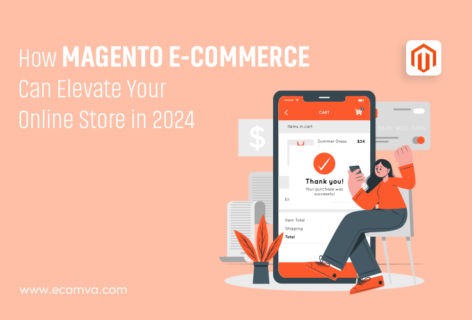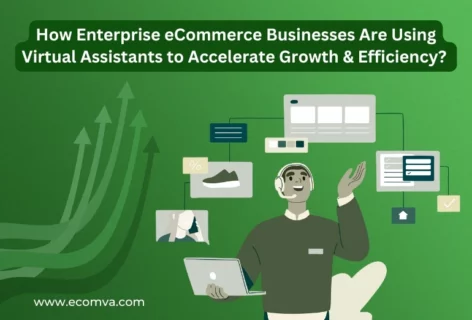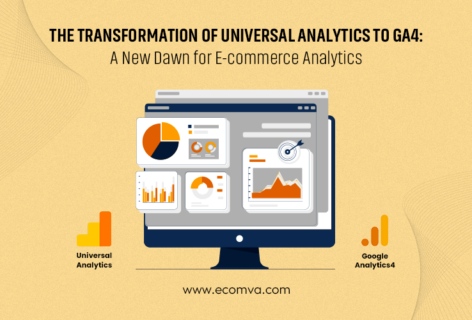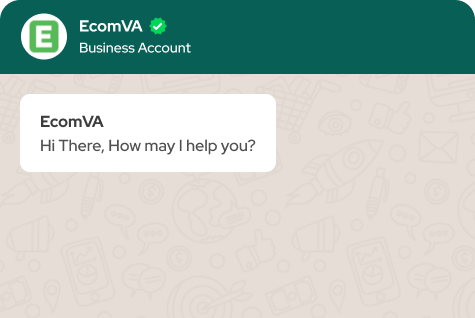Top Upselling and Cross-Selling Strategies for Effective Online Store Management
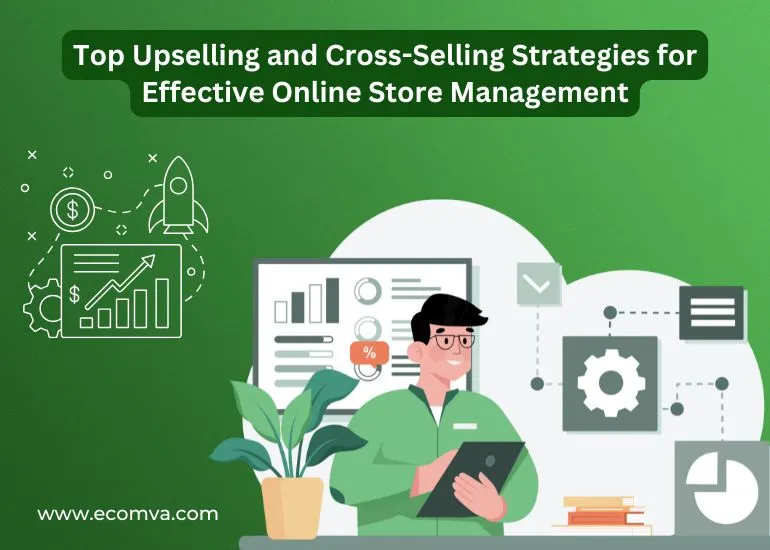
Many online store owners focus heavily on getting more customers. They invest in paid campaigns, social media, or influencer partnerships to drive more sales.
However, these marketing strategies can help ecommerce businesses grow initially, but after a certain point, they stop being cost-effective for some.
As competition increases the following things happen:
- Traffic becomes more expensive
- Conversion rates level off
- Acquisition costs begin to shrink overall margins
A more sustainable growth path is increasing the amount each customer spends during a single order. Upselling and cross-selling are proven ways to do that.
They work best when your store’s backend is organized. That means product data is accurate and inventory is synced in real-time. Also, customer journeys are smooth from product page to checkout.
With such effective online store management, you can structure these offers properly and adjust your strategy as needed. This approach:
- Raises average order value
- Supports customer loyalty
- Makes better use of your existing traffic
How Does Upselling And Cross-Selling Matter In Online Store Management
Upselling is all about motivating customers to buy a more premium version of the product they’re already interested in. Cross-selling means showing them related items that work well with their original choice.
Both tactics directly affect your bottom line. But they only work well when your store’s systems are clean, responsive, and accurate. That means:
- Product variants and upgrade options must be visible and well-described
- Inventory data needs to be current and reliable
- Checkout flows should be fast and mobile-friendly
If your store lacks good structure, even the best upsell or cross-sell offer can backfire. That’s where tools like retail store management software help by making sure your product information, pricing, and categories are always up-to-date. Clean data and automated stock syncing also reduce order issues, avoid stockouts, and support smoother customer experiences.
To make these systems work consistently, someone has to keep everything aligned and well-managed. Businesses using services like Ecommerce Store Management from EcomVA often gain better control over their catalogue setup, product tagging, and backend updates. This helps ensure that upsell and cross-sell offers are not just shown but are actually backed by reliable store operations.
Another important aspect is dependable inventory and order management for online stores. This ensures that cross-sold items are actually in stock and correctly displayed, helping avoid missed opportunities and customer dissatisfaction.
Understanding the Difference: Upselling vs Cross-Selling
Here’s a quick comparison of how these two strategies work:
| Strategy | What It Does | Example |
|---|---|---|
| Upselling | Suggests a higher-value version of the same product | Recommending the Pro model instead of the Basic one |
| Cross-Selling | Suggests complementary products alongside the main item | Suggesting a mousepad when buying a mouse |
The timing and placement of these strategies matter. Upselling is best used before or during the product page and checkout process. Cross-selling often works well on the cart page or as part of a post-purchase email.
Using both well is a part of smart online store management.
5 Upselling Strategies For Online Store Management
Upgrade Paths with Clear Value
Offer three versions of your product: basic, standard, and premium. Make the standard version the default selection with a visible price-to-feature comparison chart. For example, if you’re selling skincare kits, show that the premium kit includes 2 extra items and saves 15% compared to buying them separately.
Social Proof for Higher-Priced Options
Place 4–5 customer reviews directly below the premium option that highlight the added value or better results. For example, if you’re offering a $199 and $299 software plan, feature a quote like “The advanced plan saved us hours every week.” This helps push hesitant buyers toward the upgrade.
Free Shipping Thresholds
If your current average order value is $48, set the free shipping threshold at $60. On the cart page, display a progress bar like: “You’re $12 away from free shipping!” This small push often encourages customers to add one more item. This is one of the simplest ways to support your ecommerce marketing management goals.
Dynamic Product Badging
Use labels like “Best Value” or “Most Chosen” on your mid- or top-tier product versions — especially if data shows they convert well. In Shopify, this can be done using apps like Product Labels & Badges. These badges quickly signal trust and popularity.
Exit-Intent Offers for Upgrades
Use tools like OptiMonk or Privy to trigger a pop-up when a user hovers toward the exit. For example: “Upgrade to the Pro Plan in the next 10 minutes and get 20% off.” This creates urgency and recovers lost upsell opportunities.
According to Shopify’s research, upselling can increase revenue by 10% to 30% on average per customer transaction.
All of the above tactics work better when powered by a clean and responsive backend. That’s where ecommerce customer experience management plays a key role in making sure upsells feel relevant and natural to the shopper.
5 Cross-Selling Strategies For Online Store Management
Bundle Related Products
Create fixed bundles of high-demand products with essentials. For example, in an electronics store, bundle a DSLR camera with a memory card & a tripod at 10% off. Use your CMS or apps like Bold Bundles or Shopify Bundles to group these SKUs and track them as a single product while syncing inventory.
“Buy It With” Sections on Product Pages
Enable “Buy It With” or “Frequently Bought Together” modules that auto-populate based on order history. In Shopify, apps like ReConvert or FBT can do this. Make sure the suggestions are based on real customer data, for example, showing a laptop sleeve and mouse when someone views a laptop.
Cart Page Cross-Sells
Place a module below the cart summary that recommends low-cost add-ons like screen protectors or chargers. Keep the total visible and allow one-click add. Use clear pricing: “Add for $7.95 — No extra shipping cost.” This can be done using in-cart upsell apps like Honeycomb.
Post-Purchase Email Offers
Schedule a 3-part email sequence starting 48 hours after purchase using Klaviyo or Omnisend. Email 1 suggests accessories, Email 2 includes a discount on related items, and Email 3 shows customer photos using those add-ons. A qualified email automation expert or VA can set this up in under a day.
Order Confirmation Page Suggestions
Add a visual block on the thank-you page that shows quick, one-click upsells. For example, “Still need an HDMI cable?” with an “Add to Order” button. Apps like ReConvert allow you to do this without touching code. This is especially useful for small accessories or warranties.
Well-executed cross-sells also help lower return rates, especially when they offer something that improves product use.
These actions connect directly to ecommerce customer experience management, which focuses on anticipating buyer needs and suggesting options that add genuine value. This increases loyalty and average spend.
How Virtual Assistants Can Support Upselling & Cross-Selling Execution
Virtual assistants trained in ecommerce can take care of the background work so you can concentrate on growth. Here are some ways they contribute:
- Setting up and managing upsell and cross-sell offers inside the CMS
- Updating product descriptions and tags for bundled items
- Running A/B tests on pricing placements and copy
- Reporting on what’s working and what needs editing
- Syncing add-on items with inventory and order management for online stores
Real-World Implementation Example: A 4-Step Template You Can Use Today
You can get started with this basic framework to build your upselling and cross-selling setup:
Pick Your Upsell and Cross-Sell Products
Start by checking which of your products have the highest profit margins or best customer satisfaction ratings. Select 2–3 products for upselling (e.g., Basic vs Premium headphones) and identify accessories or add-ons for cross-selling (e.g., headphone stand, audio splitter). Use your sales data or Google Analytics to confirm that these products are frequently bought together or have room for AOV improvement.
Set Up Offers in Your Ecommerce Platform
Use your platform’s built-in tools or third-party apps to show offers. In Shopify, enable product recommendations using “Product Upsell” or “Frequently Bought Together” apps. Place upsells on the product page (before ‘Add to Cart’) and cross-sells on the cart page. Make sure the design is mobile-friendly and doesn’t slow down the page.
Create Follow-Up Campaigns with Automation Tools
Set up an automated email flow using platforms like Klaviyo or DotDigital. Trigger the first email two days after a customer completes their purchase. Keep it short and helpful — suggest something practical they might need next. For example: “Need a replacement ink cartridge?” or “Customers who bought this also grabbed the USB-C adapter.” Include a limited-time offer to prompt quicker decisions. Make sure to track clicks and segment future sends based on what they bought, so every email stays relevant.
Track and Optimize Performance with Weekly Reviews
Don’t let your upsell and cross-sell setup run on autopilot. Make time each week to check how things are performing. Look at:
- Click-through rates
- Average Order Value (AOV)
- Whether customers are actually adding suggested items
Use your website reports or Google Analytics to spot what’s working and what isn’t. Then tweak the copy, swap out products, or move your offers to a better spot on the page. Small updates each week keep your strategy sharp.
Next Steps for Your Store!
You’ve now got clear tactics for increasing order value without changing your traffic or ad spend. The next move is to get those offers live. Choose products that make sense for upsells and cross-sells, set them up clearly, and make sure your backend can support it.
Good online store management makes this easier to handle. You’ll be able to test, review, and adjust without delays. And if managing all that is too much for your team, you don’t have to do it alone. EcomVA works with ecommerce brands every day to help with product updates, campaign setup, automated emails, and reporting.
Once these systems are in place, it’s easier to grow without adding more stress. More sales, happier customers, and better margins — all from the people already buying from you.
FAQs
1. How do I know which products to upsell or cross-sell?
Start with your winners—products that people love and leave great reviews for. Look at items with high profit margins and see what customers often buy together. For example, if someone buys a camera, a case or memory card is a natural add-on.
2. What’s the best way to test if my upsell or cross-sell offers are working?
Run A/B tests. For this try different versions of your offer, then change where it shows up on the page or even the price. You should also keep an eye on key metrics like:
- Click-through rate (CTR)
- How often people add extras to their cart (attach rate)
- Average order value (AOV)
Once you see what works best, go with that version across your site.
3. Should I give a discount on cross-sell bundles or just keep regular prices?
A small discount (like 5–10%) can help boost sales, especially when the items naturally go together. But it’s not always needed. If the bundle just makes sense and offers clear value, people will often buy it without a discount.
4. How often should I update my upsell and cross-sell offers?
At least once a month. But if you’ve got a busy store, new products launching, or seasonal trends, check in weekly. The goal is to make sure the offers stay relevant and keep converting.
5. Can upselling and cross-selling work for digital products or services too?
Absolutely. If you sell software, upsell to a premium version. If you offer online services, cross-sell things like:
- Templates
- Setup help
- Extended support

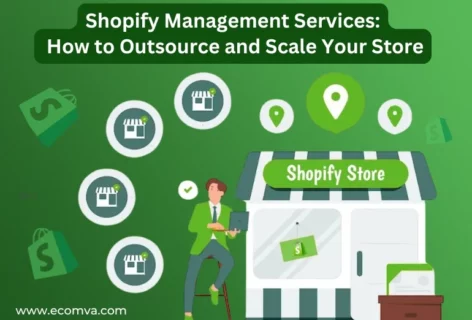
![How Dropshipping Works The Ultimate Guide [Updated for 2023]](https://www.ecomva.com/wp-content/uploads/2022/12/Dropshipping-472x320.jpg)
